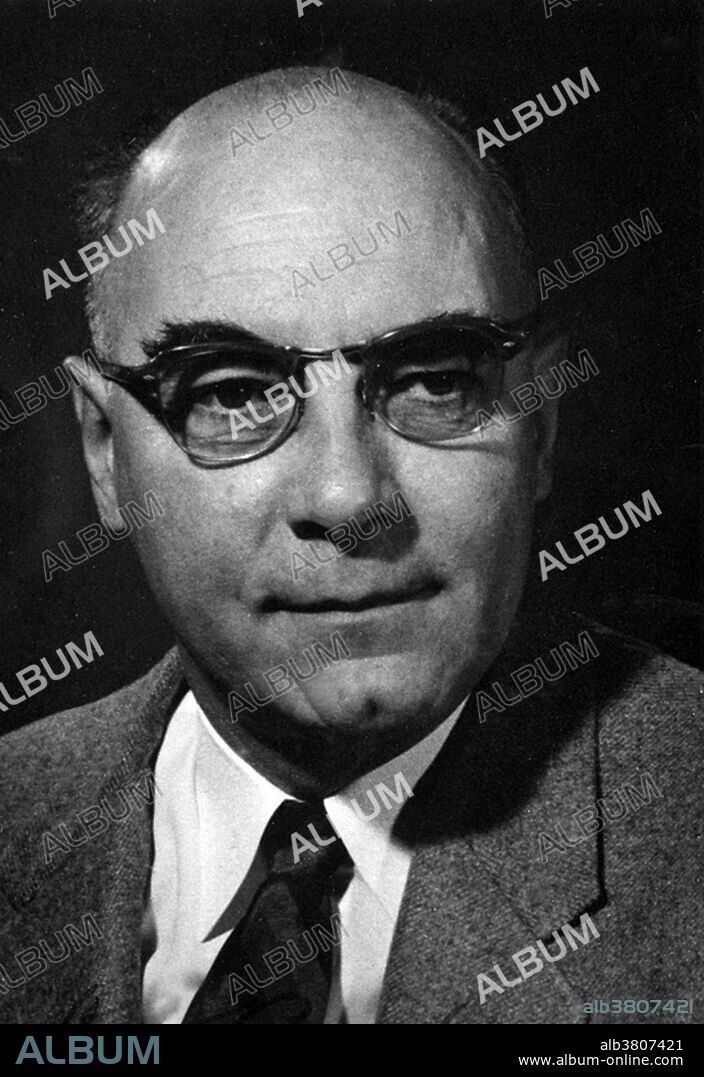alb3807421
Carl David Anderson, American Physicist

|
Add to another lightbox |
|
Add to another lightbox |



Buy this image.
Select the use:

Title:
Carl David Anderson, American Physicist
Caption:
Carl David Anderson (September 3, 1905 - January 11, 1991) was an American physicist. He studied physics and engineering at Caltech where he received his Ph.D in 1930. Under the supervision of Robert Millikan, he began investigations into cosmic rays during the course of which he encountered unexpected particle tracks in his cloud chamber photographs that he correctly interpreted as having been created by a particle with the same mass as the electron, but with opposite electrical charge. He first detected the particles in cosmic rays. He then produced more conclusive proof by shooting gamma rays produced by the natural radioactive nuclide ThC" into other materials, resulting in the creation of positron-electron pairs. For this work, he shared the 1936 Nobel Prize in Physics with Victor Hess. In 1936, Anderson and his first graduate student, Seth Neddermeyer, discovered the muon, a subatomic particle 207 times more massive than the electron, but with the same negative electric charge and spin 1/2 as the electron, again in cosmic rays. He spent all of his academic and research career at Caltech. During World War II, he conducted research in rocketry there. He was elected a Fellow of the American Academy of Arts and Sciences in 1950. He died in 1991 at the age of 85
Category:
black & white • Science: Personalities
Credit:
Album / Science Source / Smithsonian Institution Libraries
Releases:
Image size:
3150 x 4579 px | 41.3 MB
Print size:
26.7 x 38.8 cm | 10.5 x 15.3 in (300 dpi)
Keywords:
20 20TH XX XXTH TWENTIETH CENTURY • 20 XX TWENTIETH CENTURY • 20TH CENTURY • 20TH • AMERICAN • ANDERSON • BLACK & WHITE • BW • CARL ANDERSON • CARL DAVID ANDERSON • CELEBRITIES • CELEBRITY • FAMOUS PEOPLE • FAMOUS • FIGURE • HISTORIC • HISTORICAL • HISTORY • IMPORTANT • MALE • MAN • MEN • NOBEL LAUREATE • NOBEL PRIZE LAUREATE • NOBEL PRIZE RECIPIENT • NOBEL PRIZE WINNER • NOBEL PRIZE • NOBEL RECIPIENT • NOBEL WINNER • NOBEL • NOBELIST • NOTABLE • PEOPLE • PERSON • PERSONALITIES • PERSONALITY • PHOTO • PHOTOGRAPH • PHYSICIST • PHYSICS • PORTAIT • PORTRAIT • POTRAIT • SCIENCE • SCIENCE: PERSONALITIES • TWENTIETH CENTURY • UNITED STATISM US • USA • WELL-KNOWN


 Pinterest
Pinterest Twitter
Twitter Facebook
Facebook Copy link
Copy link Email
Email
